Issue No.10 / June 16,2015

A one and a half day round table meet that took place on 15th and 16th May at Mumbai, organised by the NHRD Network and Bombay Management Association (BMA), on “Culture – Its strategic significance in the present day business scenario” threw light on several aspects of corporate culture, including Organisation Culture: How it can be the source of Competitive Advantage? Why Transformation efforts succeed or fail? Corporate Culture and Company Performance; Putting People First for Organisational Success; and Internationalisation of Organisation & Culture Building. Corporate Citizen, media partner for the event, will carry an account of each panel discussion in consecutive issues. This issue brings to you insights on the panel discussion on “Organisation Culture: How it can be a source of competitive advantage”,addressed by top delegates from
Corporate culture refers to the shared values, attitudes, standards and beliefs that characterise an organisation and define its nature. Corporate culture is rooted in an organisation’s goals, strategies, structure, and approaches to labour, customers, investors, and the greater community. The beliefs and behaviours determine how a company’s employees and management interact and handle outside business transactions. It is true that culture is the biggest differentiator in today’s world and yes, one cannot buy an organisation’s culture.
"The culture of an organisation needs to be dynamic as the business context is also evolving. Whilst there needs to be a core set of values which keeps the organisation anchored, they have to mesh with the purpose of the organisation"
- Judhajit Das
The session was moderated by M.T. Lakshmanan, Head-Talent Management, Corporate HR at Larsen & Toubro, and the panelists included Judhajit Das, Chief Human Resources, ICICI Prudential Life Insurance Co. Ltd. & President, NHRDN, Mumbai Chapter, Dr Arvind Agrawal, Management Board Member & President-Corporate Development & HR, RPG Group and Kalpana Jaishankar, Senior Vice President HR, Tata Consulting Engineers Ltd.
Quoting an example of the famous coffee shop, Starbucks, while visiting Los Angeles, California, Lakshmanan threw light on the culture there.
“When you talk about culture... what is so special about the coffee shop, Starbucks? I was curious and wanted to see what was so special about Starbucks that made it so interesting. I looked at its vision—well, its vision is to create a place between work and home. They wanted to create a synergy between work and home. People were seen busy chatting at the coffee shop, there were some working, thereby creating a friendly work atmosphere. The key is that Starbucks will never compromise on the quality of coffee being served and the staff has a very friendly attitude and is very energetic. So the culture of the company is creating such a friendly manner which gets reflected at the point of customer service. I saw that they knew their regular customers well. We kept wondering what was so special about Starbucks. The atmosphere is friendly and always makes you feel you want to go back. They want people to meet over coffee and create a community. I could see the customers related to it completely.”
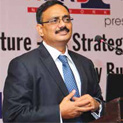
In another example, Lakshmanan presented the example of Google as a company, which truly believes that it’s their people who made the culture there.
“Look at Google, if you go to their website, it says it’s the people who make the culture there. Everyone talks about the food, canteen and the whole thing is designed in such a way that it reflects the design of innovation. No wonder, everyone talks about Google. So there’s a clear culture and a clear alignment of culture and that’s the strategy at the organisation. When you see every successful company, you see how strategy meets culture and how culture meets strategy and how
well they are integrated. The moment they are integrated, they leverage each other and the result is significantly different --what they experience are synergies in their organisations.”
Meanwhile, Judhajit Das, CHRO, ICICI Prudential Life Insurance Co. Ltd. & President, NHRDN, Mumbai Chapter, threw light on the working of culture in an organisation, while also sharing his experiences.
“The culture of an organization is created and tested daily at an operating level. For example, what should be the HR response when a star employee comes up and says that she is resigning as she has received a better offer, say, 40 per cent more compensation than what she is getting currently. One option would be to say “We want you to stay back and we will immediately match your offer” – another option, would be to make a counter offer which may include a combination of role, promotion, compensation etc. but it will be effected with the annual appraisal cycle. Another option would be to simply say, “We would love you to stay back but we don’t negotiate compensation and if you feel you have a better opportunity, you should go ahead”. Each of these responses have implications for the perceptions of dimensions of culture in an organization such as fairness, trust, transparency, meritocracy etc. In the public sector and institutions with strong governance standards, compensation & promotions are based on certain criteria and it is not negotiable. Hence, we don’t hear of too many internal equity 16 issues, it is uniformly fair or unfair as it is based on a set of rules and discretion is not allowed. In my view, the biggest dissonance at work happens because people feel the organisation is not fair and again, this is a question of perception. The management may feel that their actions are fair and reasonable but a large number of employees may feel the actions taken are not fair. Therefore, a set of rules, norms, policies, processes and systems are important to counter perceptions of unfairness and ad-hocism. The challenges we face in our day-to-day work and our response to these challenges determine how we operationalize the culture of the organisation.”
Kalpana Jaishankar, Senior Vice President HR, Tata Consulting Engineers, too, gave her perspective on the corporate culture and her experience in Indian companies.
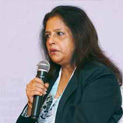
With this becoming a highly interactive session, there were a lot of questions from the au dience on how one can build a strong organisational culture, is the culture set by the company promoter himself, what is a strong organisation culture, and so on.
"so what is culture? Culture is something that you experience... it is not something that you see, touch, hear, smell or feel. You can’t really see it, you can only experience it...just like the case of coffee shop-starbucks"
-M.T.Lakshmanan
" When you move from one organisation to other, the initial days are difficult when you compare the culture with the previous one, thinking it’s working differently and hoping some of the things are similar. adaptability of the person is extremely important"
-Kalpana Jaishankar
Talking about the importance of building a strong organisational culture, Dr Arvind Agrawal, Management Board Member & President - Corporate Development & HR, RPG Group said, “I am reminded of Xerox, the company I used to work for – a good 12 years. One of their stated beliefs was that they were a very open and transparent organisation and to operationalise that they had decided that all executives will sit in offices with transparent glass, and the door will always be open. Nobody would sit behind closed wooden doors. So it was symbolic -- when you stepped in, you could see your senior directors sitting, you could see what they were doing...you could walk into their office and that was how I got trained in my early years on how you display your openness. I tried to adopt the same when I made a career move to my next company where I ventured towards having glass doors, displaying my attitude for having an open and transparent culture. In a couple of weeks’ time, I heard it over the grapevine that I was seen as a person who was not very trusting. I was taken aback. People told me that having these glass doors made people feel that I didn’t trust them, hence I had initiated this move. While this is a small matter, it shows that what is symbolic of one culture need not symbolic of the same in another organisation. The context could be different.”
Quoting an example of Indigo Airlines, he added, “Indigo Airlines is my airline of choice. Wherever I go, I prefer this airline... it is always on time. Once I asked the HR of Indigo, what keeps it on time all the time? What do you people do differently? He said... ‘we ensure everything inside Indigo is on time...we give increment letters on time, appraisals on time, if someone has a query and we say that we will get back to you in two days’ time, we make sure we get back to them.’ “So these little things give a message to everyone right across the organisation that we mean it when we say it’s on time. Contrast that with an organisation that would have a vision to deliver service to the customer on time, but internally never did anything on time -- most people in that organisation would be unlikely to believe that the management really meant it.”
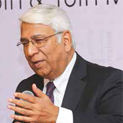
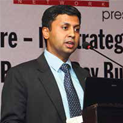
Kalpana Jaishankar: “When you move from one organisation to other, the initial days are difficult when you compare the culture with the previous one, thinking it’s working differently and hoping some of the things are similar. You also try to understand why things are different. Adaptability of the person is extremely important. A lot also depends on what your personal values are. There has to be a good match between your own personal aspirations/values with what the new culture is bringing. These days people check carefully if they can fit into the culture of the organisation that will be getting into, but if they have not done their homework or something totally unexpected happens, and there is total incompatibility or mismatch, then you would yourself move out of the organisation or at some point of time will be asked to go.”
Dr Arvind Agrawal: “The responsibility lies on both sides. As an organisation, you want to bring in people who are compatible with the culture. At the same time, you as an individual need to be adaptable and culturally sensitive to very quickly figure out what would work here and in what way you should conduct yourself differently.”
"Core values are more enduring and they will be there forever, whether it’s fairness, respect for the individual, those aspects are more fundamental and they remain forever, but culture does change and must change to ensure that it is aligned with the strategy
-DR Agrawal
Judhajit Das:“Every organisation has a core which is defined and set by the promoter or the founder and usually doesn’t change much. Without a core set of values to anchor the organization, everything will be ad-hoc and this will lead to dissonance and perceptions of unfairness. We are living in a volatile, fast changing world and when there are changes in the environment, like technological changes one cannot say that we will not change and adapt. It becomes an issue of survival.”
Dr Arvind Agrawal: “Core values are more enduring and they will be there forever, whether it’s fairness, respect for the individual, those aspects are more fundamental and they remain forever, but culture does change and must change to ensure that it is aligned with the strategy, and strategy cannot be the same forever. What is working today may not be the relevant strategy tomorrow because the marketplace is changing, new technologies are coming in, and therefore you will adopt new strategies.”
Dr Arvind Agrawal: “It is not unusual for people to reach out to friends, family members. These days, everybody checks the company background before getting in. Company websites are great places to find cultures, even though you may not know the operating culture.”
Kalpana Jaishankar: “When I had some offers in hand, I had to make a choice on which organisation to join. At this stage, it was not the compensation, but the culture and what you are getting into. You have LinkedIn, Glassdoor, available to you. So you can make a decision.”
Kalpana Jaishankar: “There is the Cultural Transformation Tool developed by British thought leader Richard Barret, used to map the seven levels of organization culture. It is a model that map’s a system-approach to cultural transformation by assessing values, desired culture of the organization, and what you want the organization to be like. Looking at gaps, you work towards a desired culture. So, this tool is an automated tool- some companies use it as a certified model.”
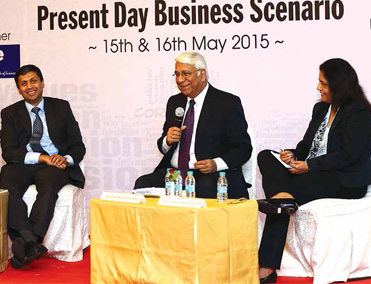
Judhajit Das: “One of the roles of an HR manager is to sense what is happening and make meaning of what is being said. Anything that detracts from achieving goals or creates challenge in delivering performance is dysfunctional. Not having optimal levels of team work, trust, accountability, cohesion can all lead to impairment in performance and while one can use instruments to seek feedback and measure, a critical role that HR Managers can play is to surface the dysfunctional behaviours or discourse in the organization and ensure alignment to the desired purpose, culture, values and business goals. Usually, lack of performance is not poor strategy, it is about how the strategy is or is not executed.”
Dr Arvind Agrawal: “Value adding culture is the culture which is aligned to the strategy. If it is out of sync with strategy, then that culture is of very little value. A lot of weightage goes into the intangibles of such points, because sustainability comes out of these intangibles. Corporate governance may be the element of the culture. The key issue is how you believe in the governance. If you believe, then it is part of your culture, then you will actually have practices to ensure governance.”
Judhajit Das: “The culture of an organization needs to dynamic as the business context is also evolving. Whilst there needs to be a core set of values which keeps the organization anchored, they have to mesh with the purpose of the organization.”
Kalpana Jaishankar: “I have seen that when a company goes through bad times, its culture gets reinforced. If you hold on throughout, strategies change, but the values remain the same.”
Dr Arvind Agrawal: “Yes! Strategies are different in bad times and different in good times. To be in in sync with strategies you have to have different cultures.”
By Mahalakshmi Hariharan and Rajesh Rao